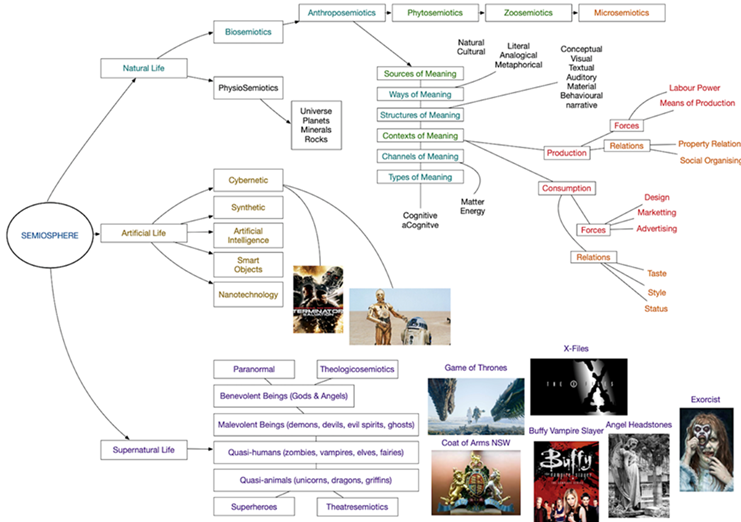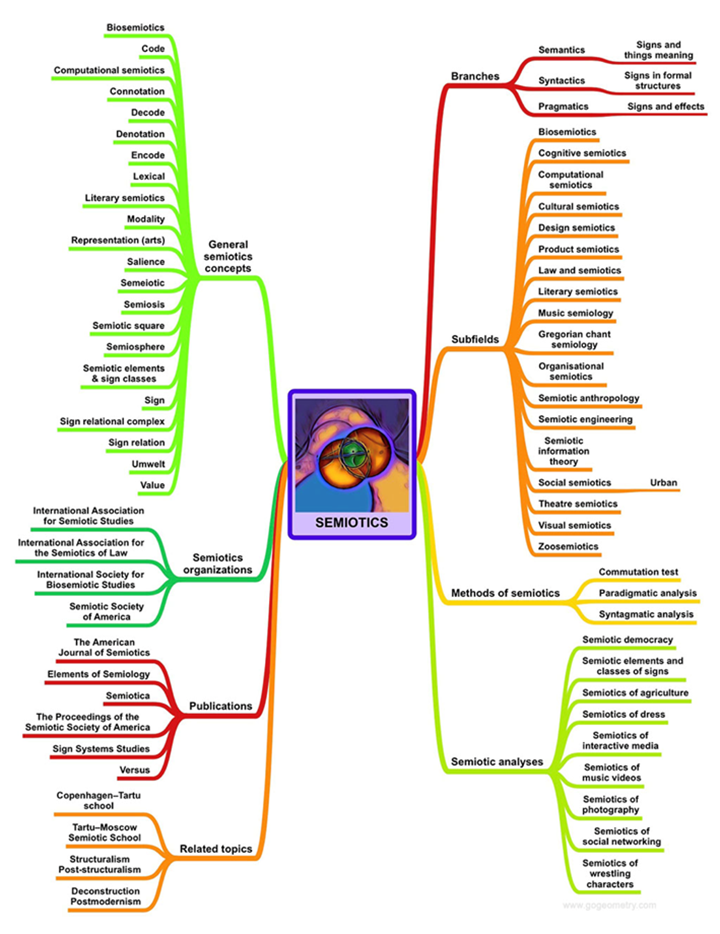Originally posted on June 15, 2021 @ 7:17 AM
A Semiotic Map for Safety
When we understand the world semiotically as Lotman articulates, we don’t see a biosphere but we see a semiosphere . This changes how one ‘sees’ the world. We envision the world ‘differently’ (https://www.humandymensions.com/product/envisioning-risk-seeing-vision-and-meaning-in-risk/). For a semiotician, objects are no longer understood as engineering designed ‘things’ but rather that in each ‘thing’ we see a sign and/or symbol of something else. In this way, all objects have tacit meaning and say more than themselves (Polanyi) and they say so unconsciously.
In order to understand a semiotic worldview I have constructed a map, because semiotics is best understood semiotically. It is through such a worldview that semioticians like Lotman understand culture (Lotman, J., (2010) The Unpredictable Workings of Culture, TLU Press, Tallin). Lotman is the founder of the idea that the world is a semiosphere. All of this is a long long way away from the simplistic notion that culture is about behaviours.
To help understand the semiosphere we view three areas of analysis: Natural Life, Artificial Life and Supernatural Life, this helps give what we see a place and classification. All that we live in and see in the world is mapped in Figure 1. The Semiosphere.
in Figure 1. The Semiosphere.
When we understand the world semiotically we no longer understand the world of objects as objectively neutral. All objects as signs/symbols say much more about life and being than themselves, all imbued with a philosophical source. We may not realize it but the most successful movies of all time are consistently about supernatural and artificial life, some of the symbols of this life are pictured on the map.
When one starts to study semiotics the sky is the limit. The next Map Figure 2. Studies in Semiotics shows all the schools of thought within semiotics. One of the best places to study semiotics is Tartu University (https://www.flfi.ut.ee/en/department-semiotics). Just explore the curriculum for a second and you will understand the depth and strength of this discipline. If you want to learn more, this blog is helpful: https://semioticon.com/semiotix/
Figure 2. Studies in Semiotics
Once one can put all this in perspective then one gets a different view in understanding risk.
One then ‘looks’ at all of the semiotics used in risk and safety and sees very different things from what is intended by the naïve approach that suggests the neutrality of objects. Hopefully these maps give some idea about what Safety doesn’t know and doesn’t want to know.
In the Social Psychology of Risk (SPoR) we offer several modules on understanding risk semiotically (https://cllr.com.au/register-to-study/ ). These studies enable participants to be wise about the application of semiotics in risk and safety thereby enabling a constructive and positive approach to risk that ensures consistency and congruence in messaging (https://safetyrisk.net/congruence-in-messaging-in-safety/ ).





Brian says
Hi Rob, great blog and yes i agree once we start understanding things semiotically we see the world in a different way and understand the significance of what we see. Although I have only touched the surface of semiotics it has become one of my favorite subjects.
Rob Long says
Yes Brian and semiotics is only one sub-set of SPoR, there is much much more that could make a huge positive difference for safety. But the industry doesn’t want to know, if prefers brutalism.